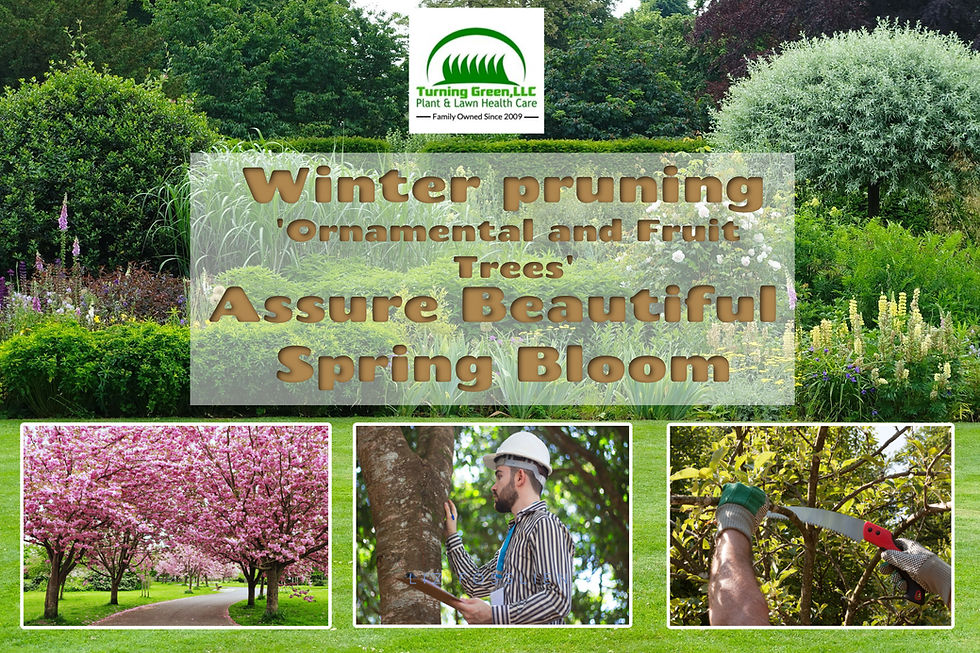Benefits of Spring Deep Root Feeding;Trees and Shrubs Fertilizer
- Oscar Melchor
- Apr 17
- 3 min read
As winter fades and warmer days beckon, it's time to think about the health of your trees and shrubs. One effective way to support their growth after the winter months is through spring deep root feeding fertilizer. This method enhances the soil and boosts the resilience and vitality of your garden. Let's explore how deep root feeding can give your landscape the boost it needs this spring.
Understanding Deep Root Feeding
Deep root feeding delivers nutrients directly to the root zone of trees and shrubs, ensuring they get the essential elements for healthy growth. This technique involves a mix of water and slow-release fertilizer that penetrates deep into the soil, where the roots can utilize it.
Unlike traditional surface fertilization, which can wash away with rainfall or irrigation, deep root feeding offers a more efficient way to deliver nutrients. This efficiency allows plants to absorb what they need far more effectively, helping them reach their full growth potential.
The Importance of Spring Fertilization
Spring is critical for plants as they wake from dormancy and begin their growth cycle. Fertilizing during this time can help them recover from winter stress and provide vital nutrients for budding leaves and flowers.
Research shows that many trees can lose up to 40% of their nutrient reserves during winter. A timely spring fertilization resets this balance, giving your plants a strong start to the growing season.
Benefits of Spring Deep Root Feeding Fertilizer
1. Promotes Winter Recovery
Winter can cause significant stress to plants, leading to potential damage. Deep root feeding helps trees and shrubs rejuvenate by replenishing their nutrient reserves.
For instance, nutrients like nitrogen, which supports leaf growth, phosphorus, which aids root development, and potassium, which helps with overall plant health, are crucial. When these macronutrients are available early in spring, plants can recover more rapidly, leading to healthier growth throughout the season.
2. Strengthens Roots
Root health is directly tied to the overall vitality of your trees and shrubs. Deep root feeding encourages roots to grow deeper. This deep growth provides better stability and access to moisture, especially during dry spells.
Stronger roots mean healthier plants that are more resilient against environmental stressors such as droughts, storms, and diseases. Investing in root health through spring fertilization leads to long-lasting resilience for your landscape.
3. Enhances Flower and Leaf Production
With the right nutrients delivered to the root zone, trees and shrubs can produce more flowers and leaves. For example, a well-fed flowering dogwood can produce up to 30% more blooms than those that are not fertilized.
A lush display of blooms and vibrant green foliage not only beautifies your garden but also supports local biodiversity. Healthy plants attract beneficial pollinators and wildlife, creating a thriving ecosystem around your home.

Get a free site evaluation today !
4. Reduces Pests and Disease Risks
Providing nutrients in the spring helps plants build stronger immune systems. Healthier trees and shrubs are less likely to suffer from pests and diseases, which can decrease the need for chemical interventions.
For example, research suggests that well-fertilized trees are up to 50% less susceptible to common pests. By investing in deep root feeding, homeowners can create a healthier environment for their plants and the surrounding ecosystem.

Get a free site evaluation today !
Expert Tips for Optimal Results
Timing is Key: Apply deep root feeding fertilizer when soil temperatures are consistently above 50°F (10°C) to promote active root growth.
Avoid Over-Fertilization: Too much fertilizer can harm your plants. Always follow the recommended application rates on the product label.
Consider Plant Types: Different trees and shrubs have unique nutrient requirements. Adjust your fertilizer choice based on the species, age, and location.
Observe Weather Conditions: Fertilizing just before a rainfall can help wash nutrients deeper into the soil, providing better access to the roots.
Wrapping It Up
Spring deep root feeding fertilizer is an essential tool for gardeners looking to rejuvenate their trees and shrubs after winter. By promoting recovery, strengthening roots, increasing flower and leaf production, and reducing the risk of pests and diseases, this method offers numerous benefits for a thriving garden.
As spring arrives, equip your plants with the nutrients they need to flourish. Implementing deep root feeding now will set the stage for a healthy, vibrant landscape throughout the growing season.

Get a free site evaluation today !






Comments